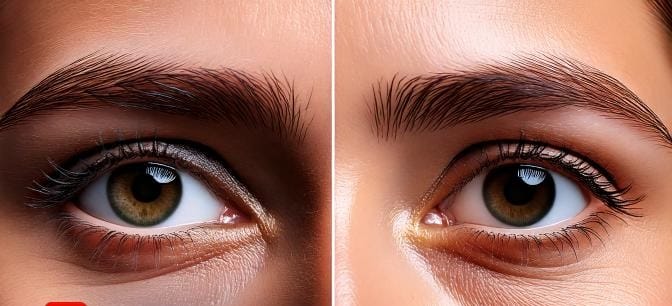The Rise of AI Art and Its Impact on the fashion Industry in 2024

The year 2024 marks a pivotal moment in the intersection of artificial intelligence (AI) and creativity, particularly in the world of visual arts. AI-generated art has become increasingly sophisticated, raising debates about the role of human creativity, the future of artists, and the legal frameworks governing artistic ownership. This transformation of the creative landscape has sparked enthusiasm and concern in equal measure. With AI’s growing influence on artistic expression, many are questioning how this will shape the future of art and creativity.
The Explosion of AI-Generated Art in 2024
AI art has evolved dramatically in recent years, with 2024 seeing an unprecedented surge in AI-generated art sales. Platforms like Artbreeder, DeepArt, and Runway ML have popularized AI art creation, allowing users to produce stunning, often surrealistic pieces with minimal effort. AI algorithms, such as those powered by machine learning models like GPT-4 and DALL·E, are generating images based on vast datasets of human-made art, synthesizing new, often startlingly original works.
Data from various art marketplaces indicates that sales of AI-generated works have surged by 40% in 2024 compared to previous years. Collectors are flocking to this new form of art, intrigued by its uniqueness and the philosophical questions it raises about creativity and authorship. In fact, AI-created art pieces have fetched record prices at auctions, with one piece selling for over $1 million in early 2024, signaling that the art world is taking AI creations seriously.
The Democratization of Creativity
One of the most significant impacts of AI art in 2024 is the democratization of creativity. Traditionally, becoming a skilled artist required years of practice and study. However, AI tools now allow individuals with no formal artistic training to produce gallery-worthy works. AI-powered platforms enable users to experiment with different styles, colors, and compositions, often generating results that rival those of trained professionals.
For instance, DeepDream, an AI-powered art generator, allows users to transform their everyday photographs into complex and abstract art with the click of a button. Similarly, programs like Runway ML offer pre-trained models that allow users to generate art based on textual prompts or simple sketches. These tools have lowered the barrier to entry in the art world, empowering people from all walks of life to express themselves creatively without needing to master traditional art techniques.
AI’s Role in Collaborating with Artists
While AI tools allow anyone to create art, they are also being used by professional artists as collaborators rather than replacements. Many contemporary artists are using AI to explore new artistic possibilities, experimenting with machine learning models to push the boundaries of creativity. For example, artist Mario Klingemann has gained international recognition for his AI-generated art, blending human creativity with machine algorithms to produce works that are both innovative and thought-provoking.
Klingemann’s use of AI as a co-creator, rather than a tool, is becoming a trend in 2024. Artists are now embracing AI as a means to explore new forms of expression, using algorithms to generate unexpected results or to iterate on their ideas faster than traditional methods allow. AI tools can also help artists overcome creative blocks, offering fresh perspectives or suggesting unique compositions that they might not have considered on their own.
Challenges and Ethical Concerns
Despite its growing popularity, AI-generated art has sparked numerous ethical and legal concerns, particularly regarding ownership and authorship. Since AI algorithms are trained on vast datasets of existing artworks, some critics argue that AI-generated art is essentially derivative, raising questions about intellectual property rights. In 2024, these debates have intensified, with some artists accusing AI companies of using their works without permission to train models.
The legal landscape is still catching up with AI’s rapid advancements. Who owns the rights to an AI-generated artwork: the person who provided the initial prompt, the developer who created the algorithm, or the AI itself? In 2024, various court cases have emerged to address these questions, with some jurisdictions ruling in favor of human creators, while others remain undecided. The lack of a global legal framework has left artists, collectors, and AI developers in a state of uncertainty.
Furthermore, there are concerns about the potential for AI to flood the art market with low-quality, mass-produced works. Some critics argue that AI-generated art lacks the emotional depth and intentionality of human-created art, reducing the value of artistic expression. They fear that as AI art becomes more prevalent, the art world may become oversaturated with content, making it harder for genuine human creativity to stand out.
The Debate Over Creativity: Can AI Truly Be Creative?
At the heart of the debate over AI art lies a fundamental question: Can AI truly be creative? Creativity has traditionally been seen as a uniquely human trait, tied to emotions, experiences, and personal expression. However, AI-generated art challenges this notion by producing works that are often indistinguishable from those made by humans.
In 2024, the philosophical debate over AI’s role in creativity is more heated than ever. Some argue that AI lacks the emotional intelligence and subjective experience required for true creativity. They claim that while AI can mimic artistic styles and generate aesthetically pleasing works, it cannot create art with the same depth of meaning as a human artist. AI lacks intention, they argue, and therefore its “creations” are simply the result of pattern recognition and algorithmic processes, rather than a genuine creative act.
Others, however, believe that AI can indeed be creative, albeit in a different way than humans. Proponents of this view argue that creativity is not limited to human experience, but can also emerge from complex systems like AI. They point out that AI often produces unexpected and novel results, which is a hallmark of creativity. In this view, AI is not replacing human creativity but expanding the boundaries of what we consider to be creative.
AI and the Future of Human Artists
As AI continues to play a larger role in the art world, many human artists are wondering what the future holds for them. Will AI eventually replace human artists, or will it become a valuable tool that enhances human creativity? In 2024, the consensus among many artists and experts is that AI is unlikely to replace human creativity entirely. Instead, it will coexist with traditional forms of art, offering new possibilities for experimentation and collaboration.
Some artists have expressed concern that AI will devalue human-made art, particularly if AI-generated works flood the market. However, others see AI as a tool that can enhance their creative process. By automating certain tasks, such as color correction or composition, AI allows artists to focus on the more conceptual aspects of their work. In this way, AI is seen as a partner in the creative process, rather than a competitor.
The Future of AI in the Art World
Looking ahead, the relationship between AI and the art world is expected to deepen in the coming years. AI-generated art will likely continue to evolve, becoming more sophisticated and integrated into the broader creative landscape. As AI tools become more accessible and user-friendly, we may see an even greater democratization of creativity, with more people using AI to express themselves artistically.
At the same time, the legal and ethical challenges surrounding AI-generated art will need to be addressed. Governments and organizations will need to develop new frameworks to ensure that artists’ rights are protected, while also allowing for innovation and experimentation in the AI art space.
Conclusion
The rise of AI-generated art in 2024 has had a profound impact on the creative industry, offering new opportunities for artistic expression while also raising important ethical and legal questions. As AI continues to evolve, it will likely play an increasingly central role in the art world, challenging our understanding of creativity and what it means to be an artist. Whether AI is seen as a threat or a tool, one thing is clear: the future of art is being shaped by technology in ways that were unimaginable just a few years ago.


